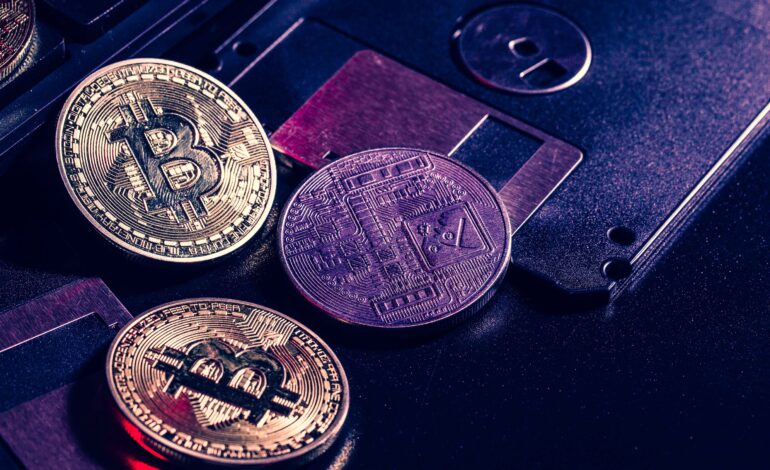⚡️ Introduction: Is This the Fastest Chain in the Game?
“We’re the fastest blockchain in the world.”
And they’ve backed it up.
In 2025, Solana continuously produces over 65,000 transactions per second (TPS) — which is much more than Ethereum, Bitcoin, and still most Layer 2s combined.
How could this possibly be?
Let’s open up the hood and take a look at how Solana performs with thousands of TPS while not breaking a chain — or the bank.
🧠 The Secret Sauce: Solana’s Architecture
Solana isn’t only fast because they are lucky — they are built differently from the ground-up.
Here are the foundational technologies that allow for high speed:
1. ⏱️ Proof of History (PoH) — Time as a Built-in Clock
Most blockchains require the involved parties to come to consensus on who said what when. This creates delays.
Solana’s new approach has a built-in consensus time clock. It is called Proof of History — and is a cryptographic time stamp that allows nodes to come to agreement on the order of transactions without all of the back and forth traffic.
It’s like giving every validator a clock that has been set at the same time. No more “What time is it?” every time.
Result: Enormous reduction in latency and higher throughput.
2. 📊 Sealevel — Parallel Smart Contract Execution
Ethereum executes smart contracts one at a time, whereas Solana’s Sealevel runtime can execute multiple smart contracts at the same time — as long as they do not interact with the same state.
This is where Solana can start to feel more like a high-powered computer and not just a decentralized ledger.
Imagine: 50 swaps, 30 NFT mints, and a DeFi liquidation all happening in the same block.
That’s Sealevel.
3. 🧪 Gulf Stream — Fast Mempool Forwarding
Solana validators do not wait for transactions to “settle” before they will begin processing the next transaction.
With Gulf Stream, when a transaction is sent, it is “forwarded” to the Solana validator prior to the completion of the current block. This means tokens are forwarded and accounted for by the start of the next block.
The validators filled the pipeline and the blockchain was moving.
4. 🌀 Turbine — Optimized Data Propagation
Solana does not send full blocks to every node.
Instead, it breaks down blocks into smaller-sized pieces (shards) and sends them in a “tree structure” to each node — helping validators with the burden of transferring large files in the most efficient way devised.
It is kind of like BitTorrent for blockchain data.
5. 💻 Pipelining — Specialized Hardware Utilization
Solana validators process common portions of the transaction validation process in simultaneous transaction validation for independent projects (using CPU pipelines similar to modern processors).
This reduces the validation time and finality time so that users feel like the transaction is instant.
📊 So… What’s the Real TPS in 2025?
From the beginning of 2025, Solana is continually reaching 65,000 TPS, and with testnet performance sometimes surpassing 100,000 TPS.
Let’s compare:
🔧 Firedancer: Upgrading TPS Benchmark
Solana will deploy Firedancer validator client from Jump Crypto within the next 12 months — to optimize TPS performance.
In lab tests, Firedancer registered >1,000,000 TPS, which is competing with high-frequency trading systems — astonishing!
Real world conditions (peers, fault tolerance, and network congestion) will influence this number but Firedancer represents the future of Solana, making it more secure, resilient and horizontally scalable.
🤔 But Does TPS Matter?
Interesting question, while TPS is not the complete story.
✅ Pros for High TPS:
-
Instant/A near-instant DeFi trading and liquidation
-
Mass NFT minting without “gas wars”
-
Real-time gaming & payments
-
Consistent user experience to meet demand
⚠️ Trade-offs to Consider:
-
Increased hardware cost and requirements for validators
-
Healthy debates about decentralization (also accessibility)
-
Significant past problems with spam and network congestion (being addressed)
🧠 Final Thoughts: Not Only Speed
It enables executions that cannot be done yet by other chains:
-
Mobile-native dApps
-
Mass-scale DeFi adoption
-
NFT airdrops to millions
-
Web2-style experiences in a Web3 world
And in 2025, the transition of the blockchain ecosystem from “early adopters” to mainstream will shift the priority of speed as an important area of focus.
So Solana can handle thousands of transactions per second — and most probably, this is only the start.
🔔 Stay Up To Date
Want live updates on Solana network performance, Firedancer rollout, and real TPS stats?
👉 Head over to CoinMarketRace.com — the ultimate source for real-time data on Solana, DeFi, and Web3 data.





